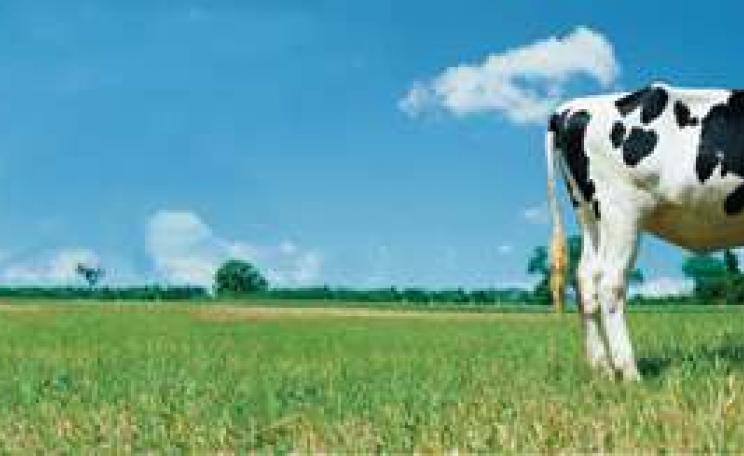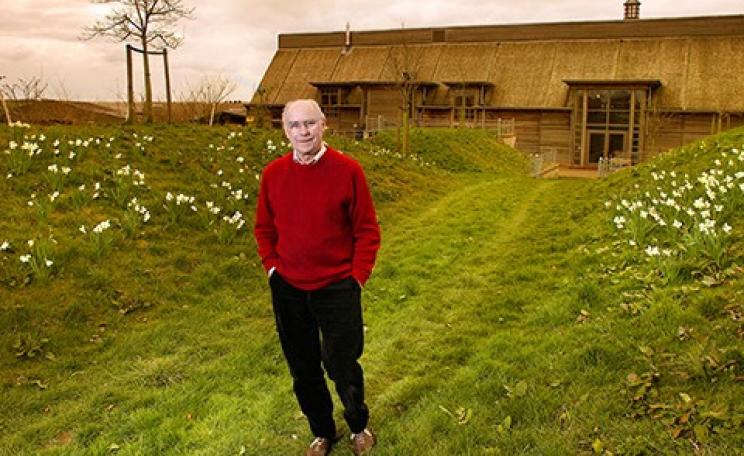There was once a time, back in 1970s Britain, when the only way to get hold of olive oil was to go to a chemist. Sold in glass medicinal bottles, it was recommended for cleaning out ears. How times have changed. Now we’ve become a nation of drizzlers, and most of us have olive oil in the kitchen because of its special flavour, versatility and widely publicised health benefits. TV chefs use it incessantly and encourage us to do the same.
Olive oil has joined the ranks of tomato ketchup, mayonnaise and marmalade to become a national staple. Demand has soared. Between 2000 and 2005, UK sales increased by 39 per cent, according to market analysts Mintel, while 2006 became the first year in which the amount of money spent on olive oil exceeded that spent on vegetable, sunflower and all other types of cooking oils. Globally, demand is growing at six per cent per year. To meet this new appetite, mass-market brands are produced intensively, so supermarkets can sell it in high volumes at lower prices (500ml of ‘own-brand’ olive oil sells for under £2.50).
While we may be benefiting from more and cheaper olive oil in our diets, however, there is a price to pay. Growing olives on an industrial scale is an environmental hazard (with negative impacts on the soil, water supply and wildlife), and when it comes to health benefits, not all olive oils are equal. So whether you plan to drizzle, fry, roast or bake with it, read on to find out how to pick your oil carefully.
The rise of industrial olive
Read the label of most bottles of olive oil and the chances are the olives it came from were grown in the EU. Olives are one of the EU’s most abundant crops: the sector comprises 2.5 million producers – roughly a third of all EU farmers. Italy, Spain, Portugal and Greece are the largest producers; they dominate the global olive market, producing 80 per cent of the world’s olive oil. Two Spanish provinces alone, Jaen and Cordoba, account for 40 per cent of total world production.
But not all olives are grown in the same way. Industrial olive farms grow their olive trees, planted at high densities, in massive irrigated orchards on lowland plains. The olives are harvested by machines that clamp around the tree’s trunk and shake it until the olives fall to the ground. Oil is then extracted by industrial-scale centrifuge, often at high temperatures. In contrast, small, traditional farms are often ancient, their trees typically planted on upland terraces. The farmers manage their groves with few or no agrochemicals, less water and less machinery. Olives are picked off the ground by hand and the oil extracted by grinding the olives in a millstone and press. Demand for cheap, mass-produced oil is making it a struggle for the smaller, traditional farms to be economically viable, however.
Although the olive farmers have for decades been allocated generous subsidies under the auspices of the Common Agricultural Policy (CAP) – the budget for 2008 stands at €2.2 billion – these are weighted against traditional farming systems. CAP production subsidies (in effect until 2007 – see ‘The wrong road’, page 27) meant that the amount of money farmers received was in direct proportion to their annual output of olives and oil – so the majority of subsidies went towards the more intensive plantations. As a result, the CAP era has seen a rapid industrialisation of olive farming.
Soil erosion, desertification and pollution
Intensive olive farming is a major cause of one of the biggest environmental problems affecting the EU: widespread soil erosion and desertification in Spain, Greece, Italy and Portugal. In 2001, the European Commission ordered an independent study into the environmental impact of olive farming across the EU. The report concluded: ‘Soil erosion is probably the most serious environmental problem associated with olive farming.
Inappropriate weed-control and soil- management practices, combined with the inherently high risk of erosion in many olive-farming areas, is leading to desertification on a wide scale in some of the main producing regions, as well as considerable run-off of soils and agrochemicals into water bodies.’
‘Anywhere in the main olive-producing areas you can see tremendous soil erosion,’ says Guy Beaufoy, a consultant on agricultural and environmental policies in Europe. ‘It’s an environmental catastrophe.’ It is starting to be tackled through cross-compliance, that is by complying with environmental legislation plus some soil protection measures – not ploughing up and down a steep slope, for example, and maintaining a proportion of ground-cover, such as grass, to protect the soil between olive rows on slopes. Policing it is a problem, though, and there is too little checking to see whether farmers are complying with the rules.
Eroded soils and farmland chemicals are among the principal pollutants of surface waters in Mediterranean regions. Cross-compliance measures aren’t always effective. Ana Carricondo, agriculture and rural development specialist for SEO, the Spanish RSPB, says there are problems with nitrate levels in surface and ground waters in Andalucía. On slopes steeper than 15 per cent, where ploughing is not allowed, herbicides are also a problem. A reservoir in Cordoba had to be closed a few years ago because of illegal herbicide levels due to surrounding olive groves.
Water shortages
Compared to horticulture or arable crops, olive production does require lower quantities of water. Irrigated olives are very efficient, but the trouble is there are hundreds of thousands of hectares of olives being irrigated – far more than lettuce or tomatoes – and that area is growing, so the magnitude of the impact is significant.
The regions affected by the expansion of irrigated olive plantations often have serious water shortage problems. For example, in Puglia (Italy), Crete and Jaen, irrigated olive plantations have continued to expand even though ground waters are already severely depleted.
Celsa Peiteado, WWF Spain’s agricultural and rural development policy officer, says this is the fourth consecutive year that Spain has suffered a drought. ‘WWF is very concerned about the massive transformation of the vineyards and olive groves, traditionally dry crops, into irrigated crops, as has been occurring for the last few years,’ she says.
More than 80 per cent of Spain’s water is devoted to irrigated crops, which puts more pressure on water reserves and the aquatic ecosystem. Much of this irrigation is supplied from the 510,000 illegal wells identified in Spain by the Environmental Department.
‘Water shortage is a huge issue in Spain, yet the country is expanding irrigation where it can because irrigation transforms production,’ says Guy Beaufoy. ‘Money from CAP goes into making boreholes and irrigation, and people are drilling water resources not touched for thousands of years – all for a few more olives. It’s a huge environmental issue, far more than people in other parts of Europe realise.’
Biodiversity
Industrial olive oil production involves a dramatic change in land use, from extensive cereal production or mixed cultivation, or even natural woodland or scrub (all with high biodiversity value), to a more intensive, irrigated and mechanised means of producing olives. This – ‘above all else’ – is the concern of WWF Spain’s Ana Carricondo: ‘Techniques that are used by intensive farms to increase production – especially frequent tillage and heavy pesticide use – result in a considerable reduction in the diversity and total numbers of flora and fauna,’ she says.
In contrast, olive groves that are managed traditionally (with ground vegetation cover, no excessive ploughing and a minimal application of herbicides and pesticides) generally have a relatively high number of animal species and a rich ground flora of herbs, flowers and grasses, all part of a mosaic of hillside habitats with a high landscape and cultural value.
The wrong road
Since the 1990s, BirdLife International and WWF have been voicing concern over the environmentally damaging trends in European olive farming, and calling for fundamental changes to the CAP market regime governing the sector. Their joint 2001 report, ‘EU policies for olive farming – unsustainable on all counts,’ concluded that the old CAP production subsidies ‘drove the sector down the wrong road, encouraging farmers to intensify production and use more irrigation, while marginalising low-input systems.’
The more intensive plantations, the report said, are ‘among the most productive in the world and have little or no need of CAP support.’ They are also of ‘little or no nature conservation value, and create environmental problems – desertification, pollution from agrochemicals, depletion of water resources…’ It said smaller, low-input farms faced a choice between intensification or abandonment, which brings increased risk of fire and erosion.
Since 2007, as part of a fundamental reform of the CAP, olive subsidies have been incorporated into the Single Farm Payment Scheme, which means they are no longer linked to olive production per se. But, says agricultural and environmental consultant Guy Beaufoy, who specialises in the Mediterranean region, this has made no real difference. ‘There has been no fundamental shift in funding – the distribution of funds is basically the same as before. It’s just fossilising the existing pattern. An intensive, high-yield plantation can still receive 10 times more per hectare than a traditional low-intensity plantation, just as before. Marginal producers are still in the same situation.’
Olive producers receive a payment equivalent to 60 per cent of the average production-linked subsidy they received during a four-year reference period (2000 to 2003), or 100 per cent in the case of producers with less than 0.3 hectares. The remaining aid (40 per cent) has been transferred into member states’ national envelopes to grant certain producers an additional ‘olive grove payment’ (OGP). It is expected that this money will be channelled into landscape preservation and environmental, social and cultural concerns.
‘All in the all, the reform has been pretty irrelevant,’ says Beaufoy. ‘The only difference is that there is no incentive to expand and intensify, and that there has been a long-term shift into agri-environment schemes. But this shift is very small when compared with the main olive subsidies.’
While some of these agri-environment schemes – such as aids for organic farming, integrated production (with the stated aim of reduced chemical use) and maintaining vegetation cover in olive groves – are being put to good use, others are being abused.
‘In Spain, for instance, much of the agri-environment budget has been drained into dodgy “input-reduction schemes” that often deliver nothing,’ says Ariel Brunner, EU agriculture policy officer of BirdLife International. ‘In one case, among the beneficiaries in Andalucía, the use of pesticides has actually increased. It is not the case officially, but these cases are due to member states using environmental schemes as hidden income support rather than as bona fide environmental tools.’
There is a better way…
Spain is the world’s leading olive oil producer, its 300 million trees contributing almost one million tonnes of oil each year to the world market. Andalucía itself accounts for 80 per cent of Spanish olive oil. It’s not all herbicides, pesticides and mechanical harvesters, however; there are producers who stick to traditional methods and grow their olives organically.
‘Organic production of olives can be almost as great as industrial production, if special attention is given to each stage of the process,’ says Andalucían producer Paco Núñez de Prado. ‘The only difference is that the organic process will have around 20 per cent higher costs.’ The Núñez de Prado family has been producing olive oil on their family estate Baena region for 200 years (www.nunezdepradousa.com).
After picking, the olives are swiftly stone-crushed, using traditional mills introduced by the Romans. Stone milling ensures the olives remain cool when crushed; the oil obtained this way is low in acidity. The pulp and vegetable water are used to make biological compost. The groves aren’t ploughed; instead a covering of vegetation is permanently maintained that protects the soil from the direct rays of the sun, maintains the humidity of the ground and prevents soil erosion, even during torrential downpours. The difference in the landscape is striking. The ground under the estate’s trees grows a healthy, lush green, instead of the bare red earth of surrounding groves.
The groves are irrigated via an underground irrigation system – a better use of water, as less is wasted through evaporation – from a regulated reservoir that permits certain limits of water depending on the rainfall that year.
There are groves that use no irrigation at all. Olivar de la Luna (www.olivardelaluna.es/en), also based in Andalucía, has been producing organic olive oil since 1994. ‘Non-irrigated groves result in a lower yield but a more intensely flavoured oil,’ says owner Tránsito Habas Sánchez, who plans to install rainwater tanks on the roof for occasional irrigation if there is a bad drought. Intensifying production was never an option – ‘we want to use resources sparingly and allow the vegetation on sections of the mountain to flourish.’
Choose carefully
The highest-quality oil has the lowest acidity levels.
• Extra Virgin (up to 1 per cent acidity) is made from ripe, undamaged olives cold-pressed swiftly after harvesting to minimise deterioration. Cold-pressed generally means the oil has not been subjected to temperatures above 27ºC (80ºF). High temperatures increase the yield but can impair the flavour and quality.
• Virgin oil (up to 2 per cent acidity) is made in the same way, but the olives are handled and pressed with less care, meaning more acidity.
• ‘Olive oil’ or ‘pure olive oil’ is usually a mix of lower-quality refined olive oils and virgin oils from the second or third pressing. They have undergone heat treatment and/or have been chemically refined.
• Commercial extra virgin olive oil is often bought by big brands in bulk and blended to standard specifications. It’s cheaper than artisan, single variety or single estate oil, but won’t have the aroma, character or taste.
• Labels can be misleading – ‘produce of Italy’ might mean ‘packaged in’. Legislation allows countries to import, bottle and re-export oil without having to declare its country of origin.
• Consider buying from countries outside the EU. Try Zaytoun, a fairly traded organic olive oil from occupied Palestine. See www.zaytoun.org
• Once opened, oil will begin to deteriorate. Its enemies are heat, light, air and age, so buy your oil in dark glass bottles or metal containers, store in a cool, dark place (but not the fridge) and use within a month or two of opening.
First heat the oil?
While cold-pressed and extra virgin may be the best for health and flavour, they are not the best oils to cook with. Unrefined oils have a lower ‘smoke point’, (the temperature at which oil begins to smoke) when they oxidize, become rancid and, when ingested, produce free radicals in the body, which can lead to cellular damage, premature ageing, a weakened immune system and a raised risk of cancer. Refined oils, such as extra light olive oil, have a higher smoke point, so for higher temperature cooking (barbecues, stir-fries or deep-frying at 200°C or above) they are a better option. Go for organic to ensure it hasn’t been refined with chemical solvents. If cooking with virgin olive oil then normal frying temperatures of 150-175°C and cooking times of no more than five to 10 minutes are thought to be okay.
Olive oil spreads
A survey by Which? found that the main ingredient in olive oil spreads is vegetable oil. Bertolli, for instance, is made with 21 per cent olive oil (refined and virgin). Other ingredients often include refined rapeseed oil (which contains transfats), emulsifiers, colour, preservatives, thickeners, flavouring and buttermilk powder. Butter is healthier; or just dip your bread in some virgin olive oil. The Food Standards Agency acknowledges that the effects of transfats may be worse than those of the saturated fat in butter.
Which oils are healthiest?
Olive oil is often touted as the secret to a healthy life. Low in saturated fat, high in heart-healthy monosaturated fat, it is rich in polyphenols, antioxidants, which may help prevent cancer, heart disease and neurodegenerative diseases – but some oils are healthier than others. • In Fats That Heal, Fats That Kill, Udo Erasmus recommends that virgin oils are the ones to go for, because non-virgin oils have been refined. The high temperatures involved in refining not only destroy their nutritional and biological value, but also cause ‘internal changes to take place in oil molecules’, making them toxic. Small amounts of transfats (which raise the type of cholesterol in the blood that increases the risk of heart disease) are formed when vegetable oils are refined. • Unless you’re buying organic there is a chance the oil may be contaminated with pesticide residues. Tests have revealed low levels of organophosphate0 pesticides – namely dimethoate, fenthion, omethoate, chlorpyrifos, methamidophos, parathion-methy parathion, methidathion and malathion – in a many olive oil samples. Tests by the Government’s Pesticide Residue Committee in 2005 showed six out of 43 samples contained residues of the organochlorine pesticide endosulfan.
Laura Sevier is the Daily Life editor for the Ecologist
This article first appeared in the Ecologist September 2008







